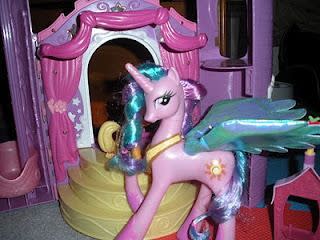 |
| Original Candy Land... |
 |
| New Candy Land... |
 |
| Original My Little Pony... |
 |
| New My Little Pony... |
 |
| Original GI Joe... |
 |
| New GI Joe... |
Sex
sells. Even when the buyer is under the age of 10. Children are shown
commercials, television shows, movies, and paraphernalia that show men and women
as sexual objects. In 2005, 70% of the episodes of the top twenty shows among
teen viewers contained some sexual content, including 8% with sexual
intercourse. Cosmetic companies like Bonnie Bell lure preschoolers – whom marketers now refer to as “pre-tweens” – to make up with lip gloss spiked with M&M’s and Dr.
Pepper flavors. To compete with the Bratz, Hasbro planned to
release a series of dolls modeled after the Pussy Cat Dolls, a burlesque troupe
turned singing group whose lyrics include "Don't cha wish your girlfriend
was hot like me; Don't cha wish your girlfriend was a freak like me?” Two days
after the Campaign for a Commercial-Free Childhood launched a letter writing
campaign, Hasbro stopped production on the dolls. (For more information visit www.commercialfreechildhood.org)
I remember growing up with cabbage patch dolls.
Loveable round faces, freckles, and fully dressed. Granted I did also have
Barbie, which may have contributed to the body obsession I face today. I also
had My Little Ponies, as featured above, with their stout build, as it should
be. Now the over glamorization of thin has even reached animals toys. This week
in my assignments I analyzed a comment that any young girl could make, “Rosie
is fat and ugly. She looks like a boy.” Young girls are social followers, not
out of spite, but out of the desire to be wanted and included. It is important that
we guide our young towards acceptance of genetically decided body shapes and
sizes. I am not promoting an unhealthy body image of overweight women, but
women who eat healthily, exercise for fun, and live at their wonderful natural
body weight.
.









